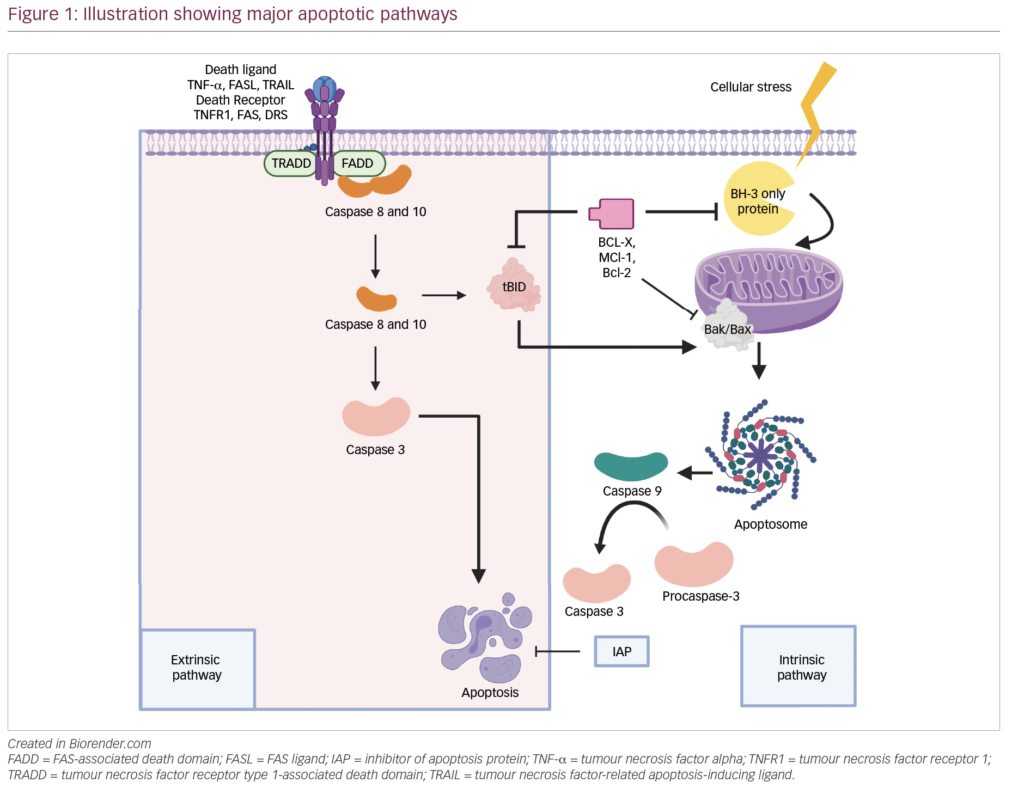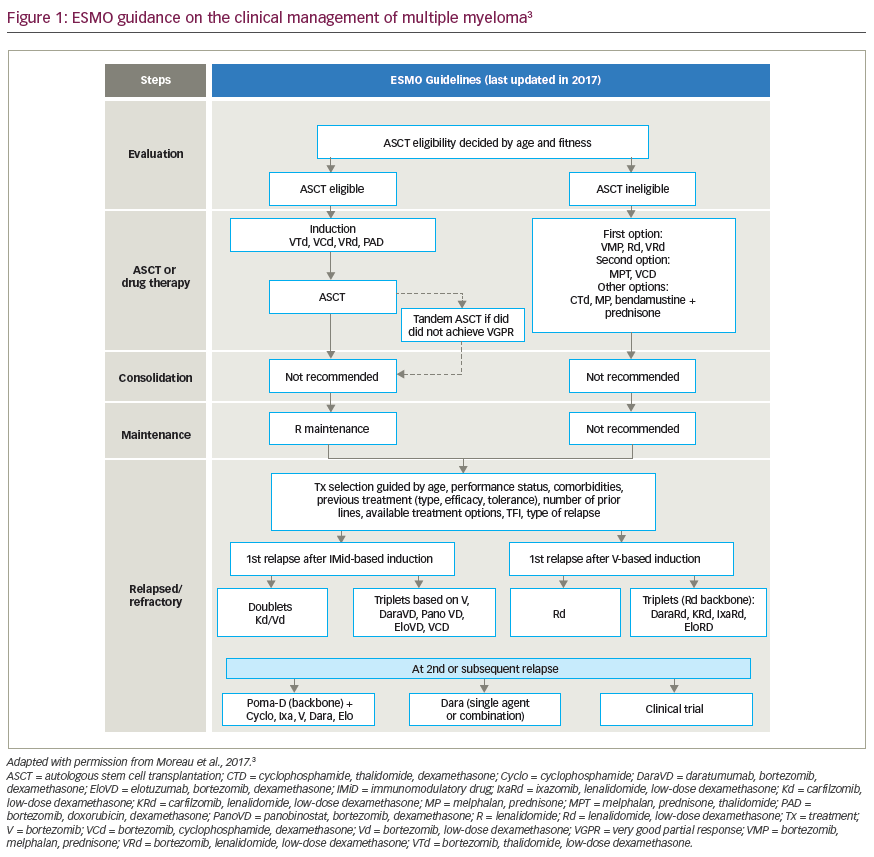Treatment paradigms in multiple myeloma are undergoing rapid transformation. Deep remissions are possible in a large number of patients with new effective therapies with or without autologous stem cell transplantation (ASCT), and this improvement is seen among all categories including newly diagnosed, relapsed refractory, elderly, as well as high-risk patients. Despite an increasingly improving proportion of complete response (CR), relapse remains an inevitable occurrence. While poor disease biology is always to be blamed, persistence of measurable residual disease (MRD) at the time of conventionally defined CR is, arguably, one of the major reasons for relapse. Conventional methods for defining CR lack the sensitivity to detect clinically relevant burden of malignant plasma cells. The measurement of MRD using sensitive assays, including multiparameter flow cytometry (MFC),1 allelespecific oligonucleotide quantitative polymerase chain reaction (ASO-qPCR),2 and next-generation sequencing (NGS) techniques,3 has unequivocally identified patients at high risk of disease recurrence and short survival. Consequently, more rigorous definitions of response have been developed by the International Myeloma Working Group (IMWG), with recent revisions that include the MRD-negative category as the deepest level of treatment response.4
Based on several small- to medium-sized studies, two recent meta-analyses have confirmed the prognostic impact of MRD.5,6 Munshi and colleagues conducted a meta-analysis of published studies from 1990–2016, including 14 studies for a pooled analysis of progression-free survival (PFS) and 12 for overall survival (OS).6 In their meta-analysis, MRD negativity correlated with both PFS and OS, independent of the type of treatment, type/sensitivity of MRD assay, and other known prognostic factors including adverse cytogenetics. The median PFS was 54 versus 26 months and median OS was 98 versus 82 months for MRD-negative versus MRD-positive patients. MRD fared superior to conventional CR in predicting survival outcomes. Among patients with CR, those who remained MRDpositive had a shorter median PFS of 34 versus 56 months (hazard ratio [HR], 0.44; 95% confidence interval [CI], 0.34–0.56; p<0.001) and median OS of 82 versus 112 months (HR 0.47; 95% CI, 0.33–0.67; p<0.001) compared with MRD-negative patients. The greatest impact of MRD negativity was seen in patients receiving ASCT as frontline treatment, and in those with standard risk cytogenetics. The worst results were seen in patients with high-risk cytogenetics who remained MRD-positive (p<0.001). Similarly, in another meta-analysis, Landgren and colleagues found that MRD negativity (versus positivity) was associated with better PFS (HR, 0.35; 95% CI, 0.27–0.46; p<0.001) and OS (HR, 0.48; 95% CI, 0.33–0.70; p<0.001).5
Several methods of MRD analysis are available for multiple myeloma. The MFC assay has gained wide acceptance, owing to easy availability, short turnaround time, and relatively low cost, however, there are a few limitations of this technique, namely low sensitivity (up to 1 × 10−4 or −5) and lack of standardization among laboratories. The recent advances in the next-generation flow cytometry technology with the usage of eight or more colors/markers for an increased specificity allow interrogation of several million cells for improved sensitivity.7,8 The ASOqPCR assay, despite its good sensitivity, is cumbersome and applicable in only a small proportion of patients. It is being replaced by NGS-based MRD assessment, which is reproducible, objective and feasible in up to 90% of multiple myeloma patients, and is more sensitive than MFC or ASO-qPCR.9 Concerted efforts are underway to develop consensus guidelines for NGS and next-generation flow cytometry platforms for MRD assessment in multiple myeloma and other related plasma cell disorders. The IMWG panel strongly encourages to cite the method, i.e. ‘Flow-MRD negative’ or ‘Sequencing-MRD negative’, when reporting the MRD data.4 In order for us to better understand the comparative efficacy of individual approaches in various clinical settings, some of the future prospective trials are including both methodologies for MRD assessment.
The current approaches for the detection of MRD rely on bone marrow assessment. However, multiple myeloma is a multi-compartmental disease at presentation, nearly always involving bone marrow and bones, and sometimes extramedullary sites. After treatment, residual disease in one or more compartments could potentially be responsible for relapse. Therefore, challenges involve measuring the low-level MRD, not just in bone marrow but also in other compartments. Relevantly, sensitive imaging has the potential to complement MRD assessment by providing a complete picture of the entire bone, bone marrow and extramedullary sites.10 Multiple studies support the notion that fluorodeoxyglucose-positron emission tomography (FDG-PET) has higher specificity over magnetic resonance imaging (MRI) for response assessment. The IMWG has defined new response categories of MRD negativity with or without absence of disease on imaging.4 In a patient deemed Flow-MRD-negative or Sequencing-MRD-negative, while radiographic studies are not required to satisfy these responses, a further evaluation using FDG-PET/computed tomography (CT) may be done for the purpose of documenting an Imaging-MRD negative status. MR techniques, including functional variations, and new PET tracers add additional information for MRD evaluation, and need to be evaluated and validated within the context of clinical trials.
As experience is gained with monoclonal antibodies and immune therapies in the first-line setting, it will be important to study if extended treatment is associated with continued deepening of responses and achievement of an MRD-negative state, and whether this may allow treatment cessation in some patients, similar to what has been investigated in chronic myeloid leukemia treated with imatinib. In this regard MRD-graded prospective treatment trials would be informative where MRD response assessment at pre-specified time points is used to guide treatment decisions, such that MRD-negative patients could stop treatment and MRD-positive patients, depending upon levels of MRD positivity, could be candidates for treatment intensification, consolidation or maintenance strategies.11
MRD as a potentially meaningful surrogate biomarker for accelerated drug approval is receiving consideration from regulatory agencies.12 A limitation to using this strategy would be applicability to therapeutics such as monoclonal antibodies and immune therapies, which, as monotherapy, seldom lead to MRD-negative status and are given continuously until disease progression. Besides the technical limitations, the measurement of MRD could potentially be complicated by the presence of residual clonal genetic aberration of indeterminate potential, intra- and inter- patient genetic and molecular heterogeneity, and minor subclones that ebb and surge at the time of recurrence. Although the vast majority of CR patients achieving operational cure (10-years or more relapse-free survival) were also MRD negative,13 achieving MRD-negative CR is not a prerequisite for long-term disease-free survival. A subset of MRD-positive patients could still experience long-term disease control and can potentially be identified by a unique immune signature by parallel immune profiling.14 There are some other outstanding questions surrounding the use of MRD that also need to be addressed. Such as:12
• Should MRD only be assessed in those who are in CR or those that attain a very good partial response?
• Does MRD negativity in standard-risk cytogenetics have the same connotation as in patients with high-risk cytogenetics?
• What should the appropriate timing and frequency of MRD measurements be to best capture the disease kinetics—single time point or serial time points?
• How will novel agents, such as monoclonal antibodies and immunotherapies, affect the MRD assessment?
• What is the exact role of imaging in MRD monitoring?
In conclusion, MRD status is an important and meaningful clinical end-point that will likely guide development of effective therapeutic combinations for patients with multiple myeloma. Integration of MRD assessment into routine care would provide opportunities for disease quantification, treatment monitoring, and therapeutic decision making. The value of MRD to guide individualized therapy and act as surrogate biomarker of therapeutic efficacy remains to be proven in the setting of prospective clinical trials














